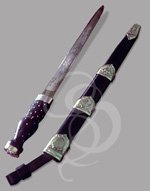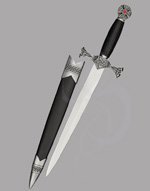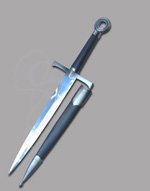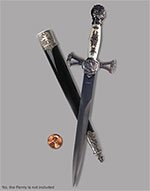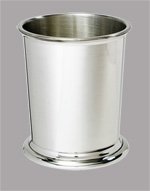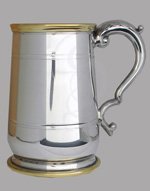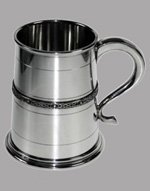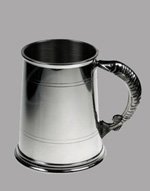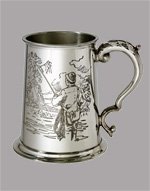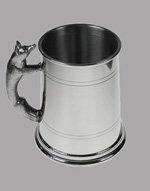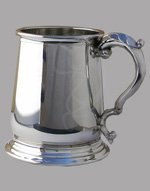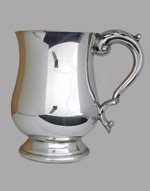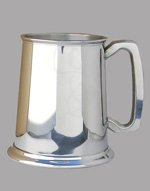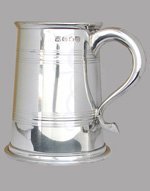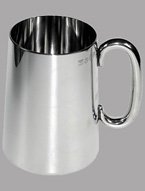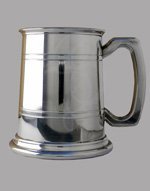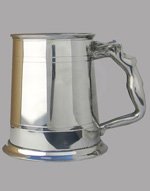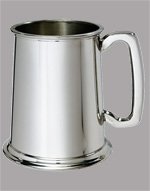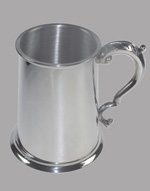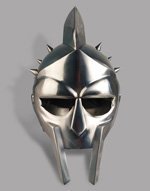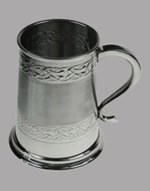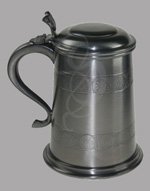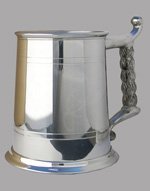
Categories
Engraved Groomsmen Gifts
Give your groomsmen the gift of engraved steel. Swords, unique tankards, daggers and flasks. They would go to hell and back with you, so you might as well arm them for the journey. Strongblade provides custom, diamond-bit engraving on most of our swords and metal products. Choose a sword, tankard or flask below and use our industry-leading, online-engraving tool to tell us how you want your item customized. Most Engravings cost less than $15.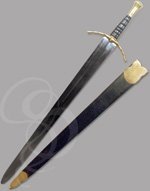
SBA-DEATHBRINGER
Deathbringer: Hand-and-a-Half Mercenary Sword
$125
In Stock!
The extremely wide blade and the scalloped brass crossguard which appear to be talons or skeletal fingers help earn the name for this model. Although not a true hand size, it does have a grip wide enough for some hand-and-a-half work.
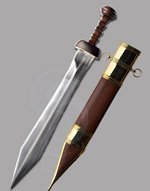
SBA-GLADIUS-VESPARUM
Roman Gladius Vesparum: Wasp-waisted Roman Gladius
$125
In Stock!
This magnificent gladius features a wasp style blade and a beautifully carved wooden grip. Each segment of the grip is carved deep for a secure hold, and separated with polished brass spacers.
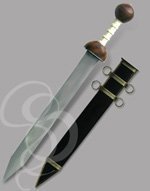
SBA-ROMANGLADIUSIII
Roman Gladius Type III with Double Loop Scabbard
$138
In Stock!
This gladius is an exceptional piece. The carved bone grip and polished wood guard and pommel are unique features. It is light and accurate with the classic V-tip that is deal for thrusting. A sturdy rhomboid cross section gives this blade outstanding strength.
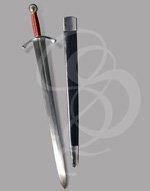
SBA-ARCHERSWORD
European Archer's Short Sword
$85
Out of Stock
This European short sword is a beautifully weighted with nickel-chromed hilt, pommel and scabbard accents. The grip is tightly wrapped with a rich red copper wiring and the blade is rugged high-carbon steel.
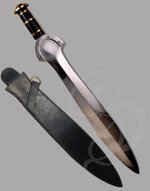
SBA-CELTICSHORTSWORD
High Carbon Steel Celtic Sword with Sheath
$85
Out of Stock
This Celtic shortsword has a polished steel semicircle guard is which is accented with brass rivets and fits snugly over the flared forte of the sword's blade. The blade is forged from our rugged high-carbon steel and is oak-leaf shaped.
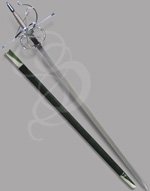
SBA-DREADWINDRAPIER
Dreadwind: Swept Hilt Rapier
$106
Out of Stock
This one of the finest rapiers that Strongblade sells at this price range. It has a breathtaking, oversized swept hilt, chromed in nickel and swirling like a sandstorm around the hand that wields it.
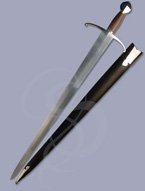
SBA-GENSTEELSWORD
Gensteel Elegant High-Carbon Steel Arming Sword and Sheath
$120
Out of Stock
The Gensteel is a fine example of the paradoxes of war. It is a beautiful thing to behold. Elegant and tapered, with gracefully curling tips on the guards and a sophisticated, spade-shaped pommel.
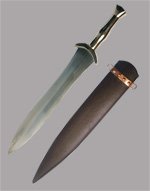
SBA-LAKONIA
Spartan Lakonia 20-inch Short Sword with Bronze Grip and Guard
$94
Out of Stock
Based on the traditional Spartan design, this Lakonia features a high carbon blade oak leaf shape blade and a solid brass hilt. It is solid yet well balanced We offer it with both tempered and non-tempered blades.
Strongblade Lore
(A Bit of History According to Strongblade)
Greek Hoplites
There have been few military units as devastating in their time as the Greek phalanx. Heavily armored and insanely well trained, these soldiers were capable of standing against any and all challengers. Fighting for one's country was an unswerving responsibility among the Greek city-states. Even the poets of the time were tough bastards; most of them wrote only of warfare, courage, resolve and beating the snot out of your enemies.
Greek warriors fought in a phalanx; a unit of heavily armored men that fought in rows, with large shields (hoplons), long spears and short swords. The wealthy made up the majority of the infantry. Those with money were the only ones who could afford the horrendously expensive armor and weapons that made a Hoplite warrior. The poorer troops were thrown into skirmishing units that were armed with slings, bows and spears and wore light armor. These skirmishers were generally only on the outskirts of the battle. This strikes me as particularly ironic because in modern day warfare it seems like the poor are the ones on the front lines while the wealthy are ... well ... on their yachts, laughing and chugging boat-drinks thousands of miles away. My how Democracy has changed over the years.
The Greek Hoplites fought primarily with spears. A typical Hoplite battle consisted of opposing units charging each other with their shields up. The two units would crash together and start shoving. If you've ever seen a rugby scrum, then you get the general idea of phalanx warfare. Only, these rugby players are extremely well armored, and are jabbing long, lethal spears over the top of their shields trying to kill as many of the opposing players as possible.
The shoving and stabbing would continue until one of the units started to falter. The first phalanx to start breaking up usually ended up getting routed and usually massacred. If neither unit gained any definitive advantage for a time, the fighting broke down to a big sloppy melee. Formations vanished and chaotic carnage would reign, with soldiers trying to keep themselves alive while killing as many of their opponents as possible. It was at this point that most Hoplites would switch to their short sword.
Phalanx units were funny things. Each man depended on every other man to hold the formation. If enough of your fellow soldiers lost their courage, your unit would be lost. It was an interesting practice for hoplite commanders to divide their very best soldiers among the front line and the very last line of their units. The front line fighters needed to be strong because they were slamming headlong into their opponents. But the back line warriors needed to be experienced because they needed to keep all of the other soldiers from running away. They would shout encouragement, push against the lines ahead of them and, if necessary, threaten the other soldiers to make sure they kept their minds on the business at hand. Running from a fight was considered cowardly, not just because you lost your nerve, but also because you doomed your mates to a horrible fate. It was said that a Greek should never die with a wound in his back.
Inspired by Model SBA-LAKONIA
